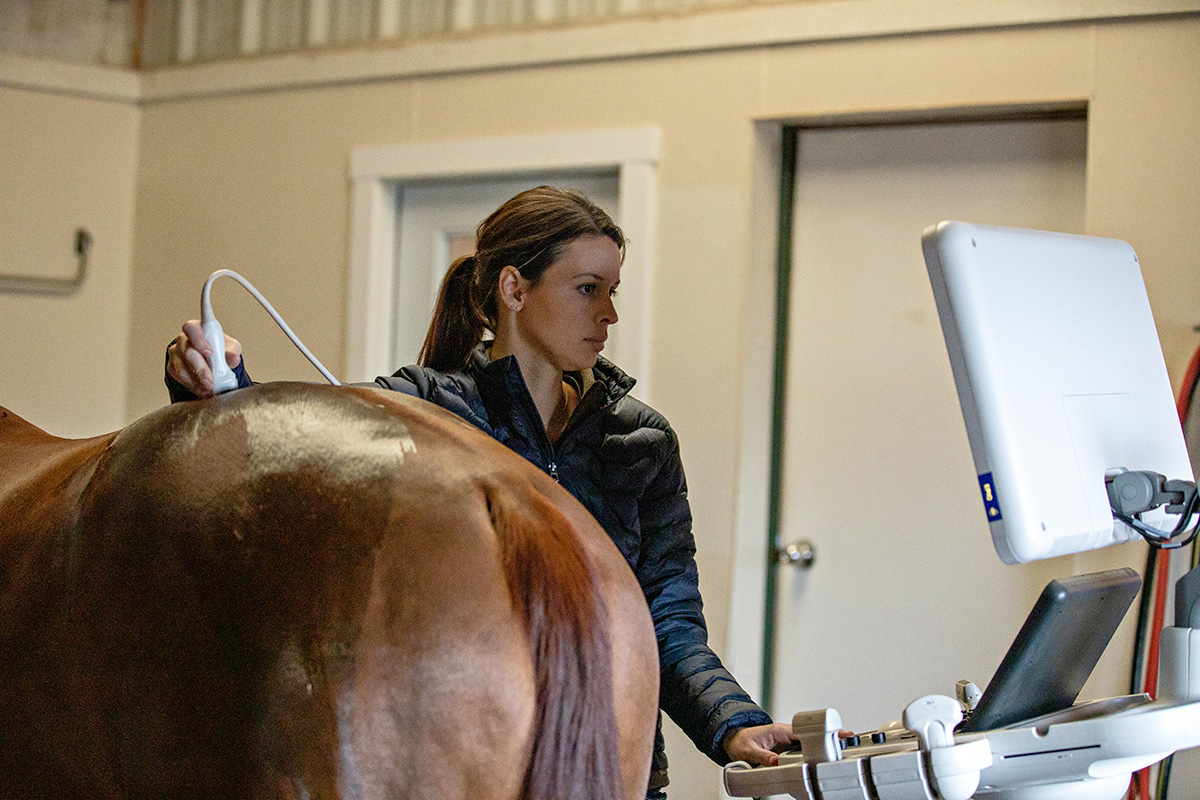If you’ve ever owned a horse, you are no stranger to unplanned expenses cropping up. Most horse owners budget for care costs without factoring in health emergencies and the frequent vet calls, medications, diagnostics, and treatments that are likely to pop up.

The study revealed that while 83 percent of horse owners believe they’re financially prepared, actual costs can be three to four times higher than expected—especially when unexpected veterinary needs arise, such as colic or orthopedic injuries that can cost up to $10,000.
Horse Illustrated: Can you tell us what the new Equine Lifetime of Care Study means for equine vets and horse owners, and why many underestimate the long-term financial commitment of owning a horse?
Jennifer Brocker: We originally did our Lifetime of Care Study for companion animals (dogs and cats). And then we decided we needed the same kind of information for equine veterinarians and horse owners, so they have a better understanding of how much money they spend over the lifetime of a horse. The way we saw it was, you’re helping prepare them for what’s to come. And since cost of care is one of the biggest barriers for horse ownership or pet ownership, we felt it was important knowing in advance and being educated on the ways that you can be prepared financially over the lifetime of your animal. We also thought it was important that veterinarians have a view into that as well.
Kate Hayes: It’s such a great tool to educate and empower clinics and practices and veterinarians, but then also on the flip side, like Jen said, to educate horse owners. Because whether people rescue a horse or get into riding for the first time, they know what a riding lesson costs, but they don’t know what the full expense of owning a horse costs. This [study] is a great tool to empower and to educate practices and clinics because this gives them information to pass on to their clients.
HI: What are some strategies equine vets are using to navigate rising costs, including tools to reduce financial friction with clients, while maintaining high-quality care?
Brocker: The strategy a lot of equine veterinarians use is, “If you can’t pay me today, I provide the care, and you can pay me later,” which leaves the veterinarian chasing the money. So we can train the veterinarians to say, “I want to take care of your horse, but that requires financial responsibility. Here are the solutions that we have in our practice to help you be ready.” The horse owner needs to understand that the veterinarian must be paid just like their board bill or hay bill is paid.
Hayes: We’re a partner with them and their business to help that shift. Regardless of what type of veterinarian you are, it’s cost that’s the biggest point of friction between you and your clients. If you talk about it from the beginning, that moment of friction is reduced, so the unexpected medical moment doesn’t also come with an unexpected financial crisis.

HI: How is CareCredit partnering with equine clinics nationwide to improve access to care while supporting sustainable practice growth?
Brocker: We’re partnering up with [equine vet practices/clinics] on various levels. First, helping educate their team. How do you have a comfortable financial conversation with a horse owner? If you don’t talk about it and you’re not comfortable talking about it, that in and of itself is a barrier. So we have a lot of training and education to help the veterinary team not be afraid to bring it up, helping them with proactive confidence in that financial moment where everybody’s really emotional.
The other thing [CareCredit is doing to help equine vet clinics] is we’ve created an all-digital financial experience, so regardless of whether you’re in the clinic or you’re out at the barn, you can apply for CareCredit, get approved, and pay—all from your phone. We’ve always been available in equine practices, but when we first went into it, our payment experience didn’t fit their model. Now they can get paid anywhere, anytime.
Hayes: If you look at our partnerships on a bigger scale with the AAEP (American Association of Equine Practitioners), being an educational partner for them allows us a platform. Education is the key word here. It supports the sustainability of the profession by providing resources that are specific to their workflows, because the ultimate goal is what’s best for the horse and what’s best for the horse owner. If we can help remove some of the barriers that are between a horse owner getting the treatment for their horse, then that’s what we’re here for.
We also partner with universities. The future veterinarian is also very important to us, so by the time that they’re in practice, that financial conversation isn’t as quite as challenging. It’s tough being a veterinary student—there’s a lot of information thrown at you, so of course the business side isn’t always top of mind. By supporting the universities and organizations that support the future veterinarian, it allows us a platform to be able to educate and help them before they’re actually in practice.
HI: What is CareCredit?
Hayes: CareCredit is a health and wellness credit card that horse owners can use for all types of veterinary services, treatments, and diagnostics.* It’s a great fit for the equine profession because instead of invoicing after service has been completed, this gives you the opportunity to pay upfront—the veterinarian is able to capture payment in full up front, but the horse owner has 6, 12, 18 months of interest-free [time to make the payments].
*Subject to credit approval
Brocker: I think one of the best things about CareCredit is once you have the credit card, you are financially ready for whatever happens, whether it’s wellness or unexpected or surgery. And you can use it for whatever animal you have at the veterinarian. It is truly your family credit card for life’s unexpected expenses.
View the entire Equine Lifetime of Care Study here.
To learn more or apply for a CareCredit card, visit www.carecredit.com.





